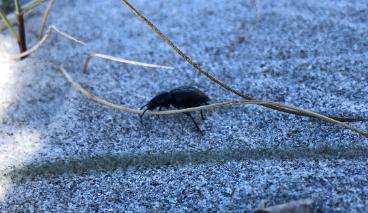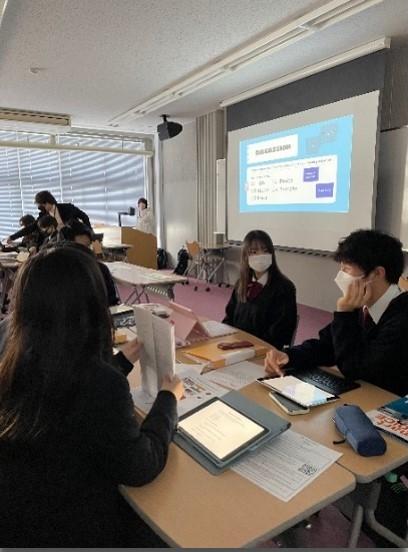Each year the world generates over 2.01 billion tons of waste. Litter and waste clog our oceans, fill our streets and clutter huge areas of the planet. They cause great damage to our natural environment, wildlife, and people’s health and well-being.
Building on UNESCO’s Trash Hack Campaign and ASPnet Teacher Guide, students and teachers from ten UNESCO ASPnet schools in the Dominican Republic, Italy, Japan, the Kingdom of Bahrain, Namibia and the Republic of Korea are participating since June 2022 in the Foundation for Environmental Education’s Litter Less Campaign and Young Reporters for the Environment Competition, engaging their peers and communities to eradicate litter and waste.
Not only did the students and teachers manage to tackle real environmental challenges, but they fostered their knowledge and critical analysis on litter and waste, enhanced their communication and teamwork skills, and initiated social responsibility and leadership in their communities. Based on an impact assessment, students increased their literacy on issues related to litter and waste by more than 30%.
Creating outdoor learning opportunities to advocate for biodiversity preservation

Students and teachers from the ASPnet school Liceo Niccolò Machiavelli in Rome Italy also focused on the topic of plastic pollution. “Next time my students are on a beach, they will think about the hours it took us to clean just one beach from litter and pollution. Our students are now much more aware on the positive and negative impacts we can make on our environment,” explain teachers Monica Rizzo and Mariella Fasanelli. Their 15-year-old students Alessandra and Endurance created a Campaign image to call on people to learn to use plastics responsibly to avoid planetary suffocation. They now advocate for using alternative, less harmful materials to protect our environment.
Fostering waste reduction, environmental awareness, collective action and sustainable behaviours stand at the heart of the Litter Less Campaign. The Istituto Comprensivo 1 Siniscola in Sardinia is located in a UNESCO Man and the Biosphere (MAB) Reserve. Teacher Giovannamaria Maloccu talks about the impact the Campaign has had in their school: “The Campaign has helped us to broaden and deepen our work on environmentally conscious tourism. Students are documenting our MAB’s biodiversity, identifying risks and coming up with creative solutions, which they share through articles, photography and videos for the Young Reporters for the Environment competition.” With a photo reportage entitled “The little important monsters”, their students Piras Andrea, Mele Chiara, Scrudato Stefano, Lavra Rebecca and Salis Celeste are raising alarm bells for the protection of vital species for biodiversity: “The beetles can be defined ‘animals extremes’. They live in deserts and in the dunes and they are important bioindicators of the habitat’s health. The species are less frequent in our beaches due to marine pollution and bathing activities; and this jeopardizes the survival of all beaches’ animals.”
Leveraging research and intercultural dialogue to build awareness on single-use plastics

In Japan, ASPnet students from the Kyoto Gaidai Nishi High School are conducting comparative research on single-use plastics and more generally plastic waste and exchanged on their results during trips to their partner schools in New Zealand and Canada. Edward Escobar, the teacher running activities at the Kyoto Gaidai Nishi High School explains: “They administered 4 surveys to compare waste management between Japan and New Zealand to better understand how similarly or different litter and waste are being handled at home, in school, in the supermarket and in parks and public spaces. I’ve seen them make good progress especially in their critical and analytical thinking skills.”
Celebrating action to keep our environment clean

To reduce the amount of waste in their environment, students and teachers from the Namibian ASPnet Coastal High School organized beach clean ups and shared key ideas and messages to reuse, recycle and repair before throwing away. Teacher Annety Moody: “Leaners have appreciation and understanding of the importance of keeping our environment clean, they share their ideas with others, and we all discuss how to recycle waste at our school now.”
Tools for schools to empower students to become the voice of the environment
In this project, participating teachers and students have been working through the tried and tested YRE methodology, which includes 4 steps:
- STEP 1 – INVESTIGATE (to identify and define a local environmental issue, investigate relevant information from primary and secondary sources, conduct original research, such as surveys/questionnaires, and interview key individuals or groups to obtain first-hand information, etc.)
- STEP 2 - RESEARCH SOLUTION (to identify possible solutions through experts/stakeholders voices to the environmental issue and evaluate its likely effectiveness, giving reasons for and against, etc.)
- STEP 3 – REPORT (to create a journalistic piece to report on the local environmental issue and its possible solutions, identify target audiences and tailor communications, plan reporting on the issue and use the appropriate journalistic format and style, etc.)
- STEP 4 – DISSEMINATE (to share their work with a local audience through the media, e.g. newspaper, magazine, radio, television, social media, exhibition, film show, local events, etc.)
Teachers and students worked with a range of free, online accessible resources, including self-paced e-courses on environmental journalism, pollution or the circular economy as well as lesson plans on Litter and Waste and they met in regular online meetings to share and exchange on promising practices.
“It is very encouraging to see how teachers are empowering their students to take an informed stand on environmental issues, investigate them, research solutions, and report and disseminate this work through journalistic pieces,” says Gosia Luszczek, International Director of the Young Reporters for the Environment. “By giving them this opportunity, the youngsters are given the chance to make their voices heard and to feel that their voice matters.”









